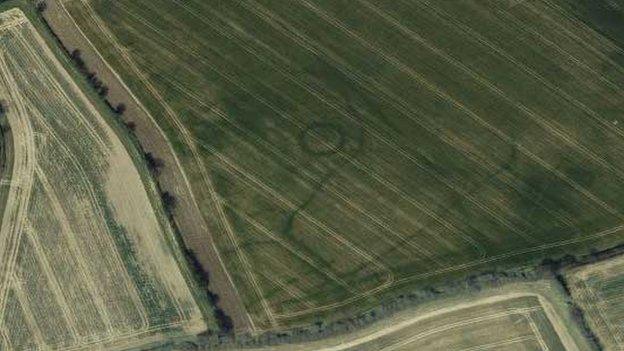Hoard of Anglo Saxon coins largest discovered under Treasure Act
- Published
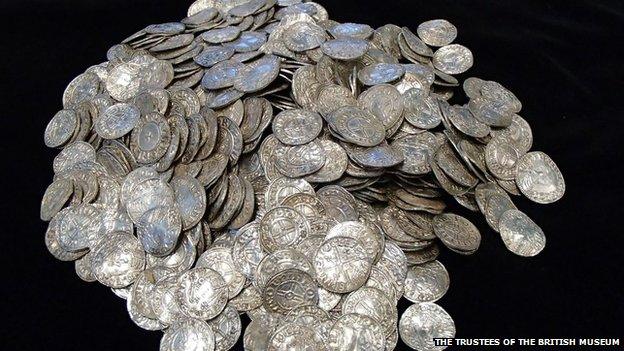
A total of 5,251 coins were found during a metal-detecting rally
A hoard of Anglo Saxon coins found in a Buckinghamshire village is the largest discovered since the Treasure Act was introduced.
More than 5,000 coins were found wrapped in a lead sheet and buried in Lenborough, near Padbury.
They depict the heads of kings Ethelred the Unready and Canute and come from 40 different mints around England.
A final valuation has yet to be completed, but it is thought the coins could be worth up to £1.3m.
Chairman of Buckinghamshire County Museum Trustees Bob Sutcliffe said they were waiting for a figure "before we decide if we are going to try and acquire this hoard".

The religious image on this coin was part of a wide programme to make the English more 'godly'
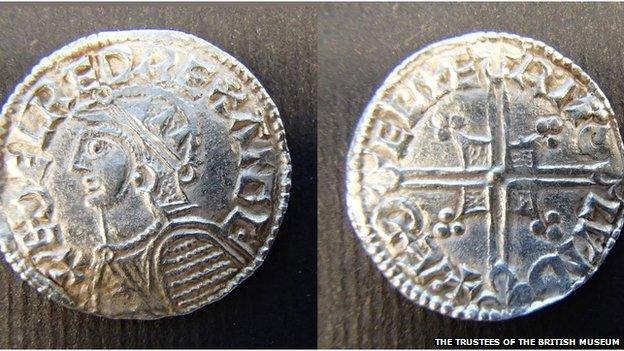
Buckinghamshire County Museum is considering buying the coins
The 5,251 coins were found by Weekend Wanderers Detecting Club member Paul Coleman, from Southampton, on 21 December.
The find is thought to be one of the biggest in the UK, while the British Museum said it was "the largest Anglo Saxon coin hoard found since the Treasure Act began" in 1996.
The coins are expected to reveal "a great deal" about monetary circulation in late Anglo Saxon England.
Analysis from the British Museum showed the coins had been buried towards the end of Canute's reign in 1035.
The lead wrapping provided protection against the elements, meaning the coins were very well preserved.
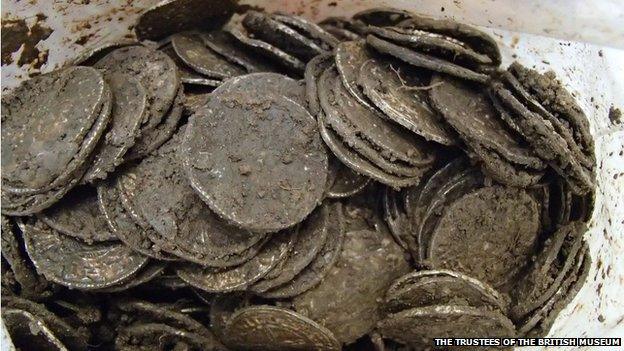
The coins were found wrapped in a lead sheet
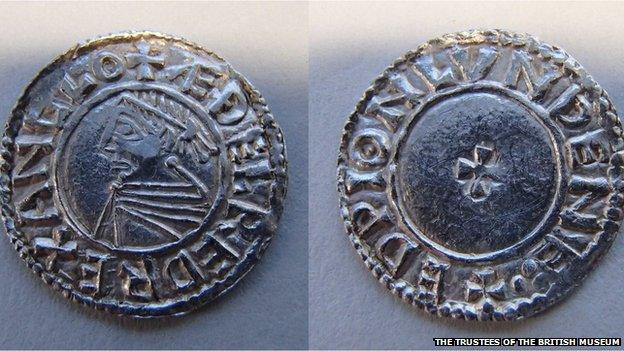
The coins came from 40 different mints around England
They went on display at the British Museum on 10 February.
Mr Coleman said his "excitement grew and grew as the size and importance of the find became apparent".
He said: "Ros Tyrell, who was in charge of the excavation, was spot on when she said, 'now I know a little of what Egyptologist Howard Carter must have felt when he first looked into the tomb of Tutankhamun".

Around 80% of the coins found were like this silver penny of Canute, but came from a wide variety of mints
Mr Sutcliffe called the treasure "an incredible find" and a "unique opportunity" to find out about the origins of Buckinghamshire.
"Someone in the now tiny village of Lenborough had stashed a massive amount of money, almost 1,000 years ago, and we want to know who and why," he said.
British Museum Director Neil MacGregor said more treasure was being found than ever before.
He said the museum's latest report demonstrated the "important contribution" of the Treasure Act and the work of Finds Liaison Officers who played a key role in making sure archaeological finds by the public were properly reported and recorded.
However, the head of the antiquities scheme that funds the finds, Roger Bland, said the future was looking uncertain because of budget reductions.
"I'm not sure whether we're going to be able to renew the contracts for nine of the 32 posts that we've got in the scheme from the 1 April.
"I'm quite concerned but I also feel that we've been in difficult places before and we've managed to keep going," he said.
Other finds recorded this year include eight Bronze Age gold bracelets, 19 Viking silver objects including ingots and fragments of arm rings and a Bronze Age gold neck ornament.
- Published2 January 2015
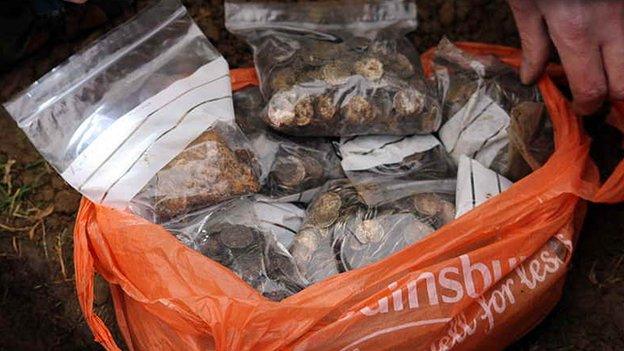
- Published13 December 2014
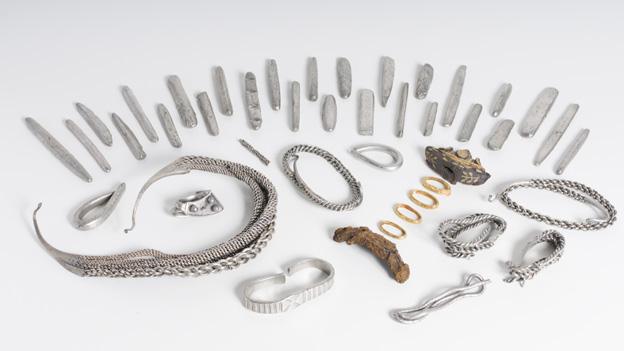
- Published11 December 2014
